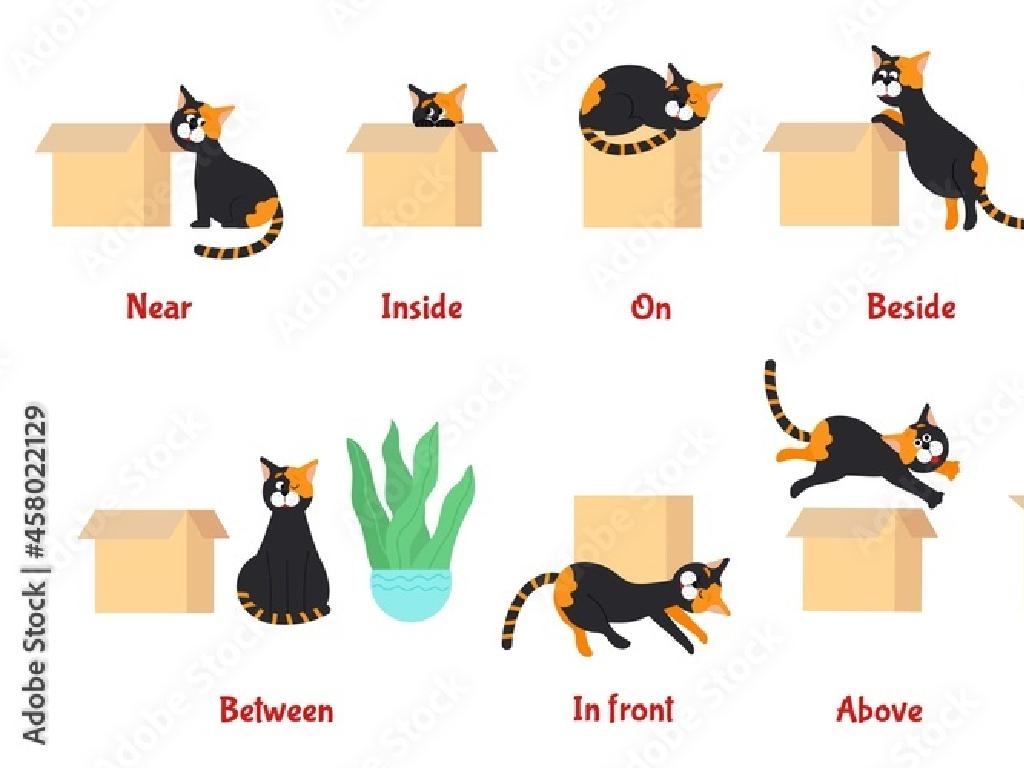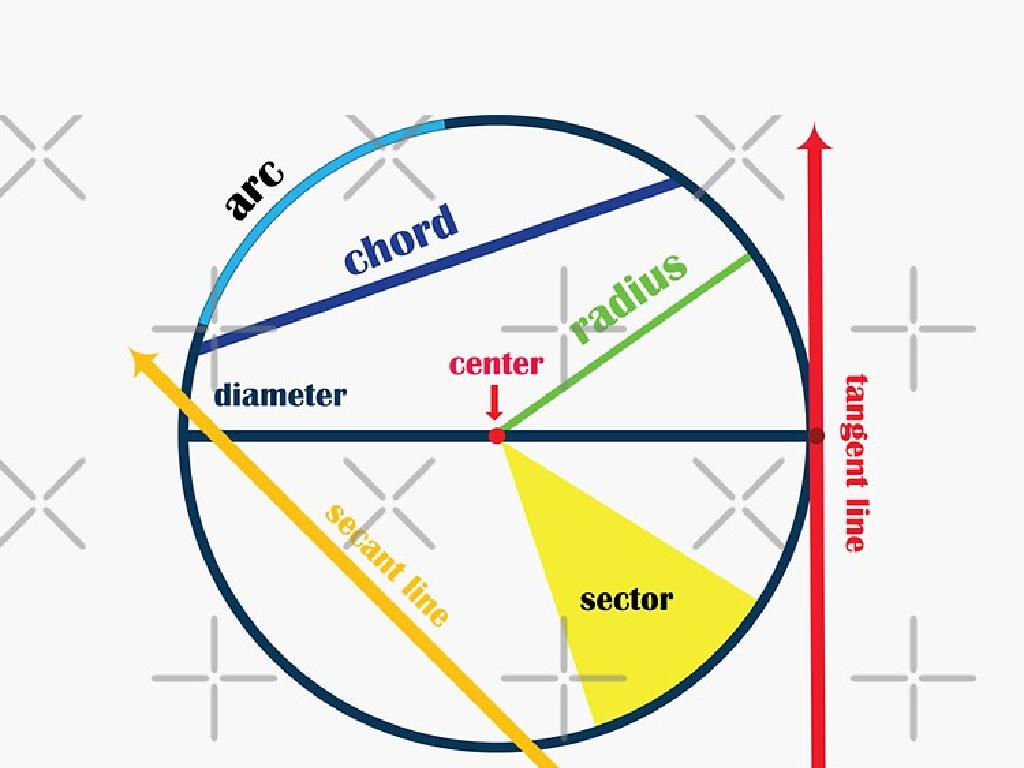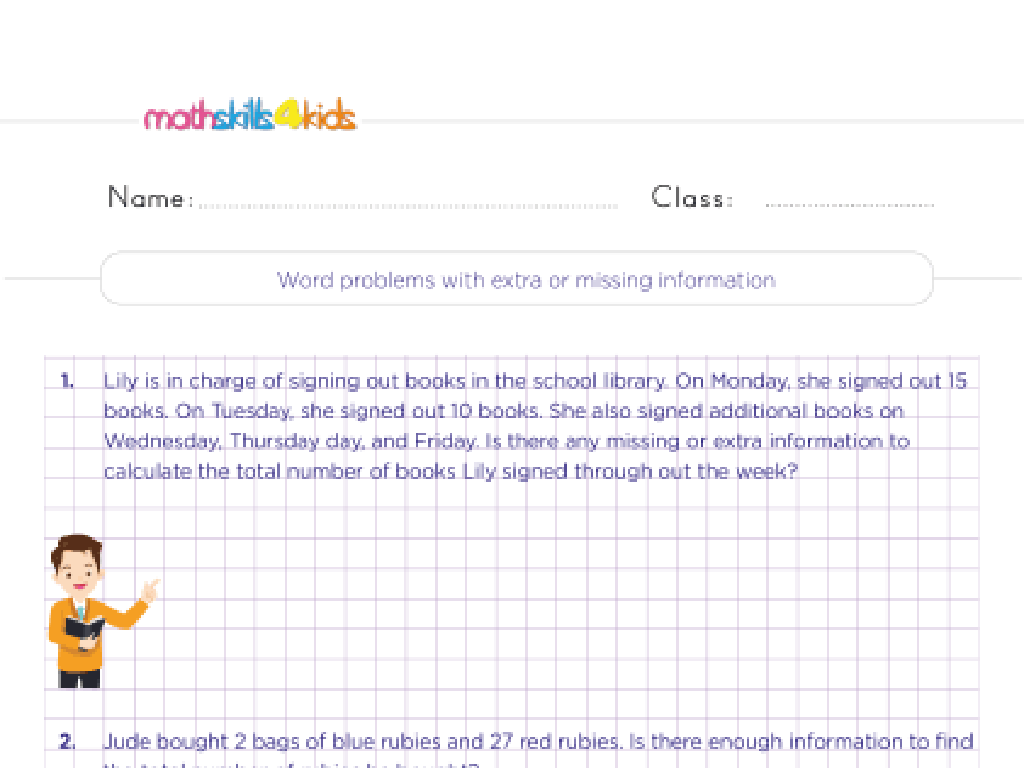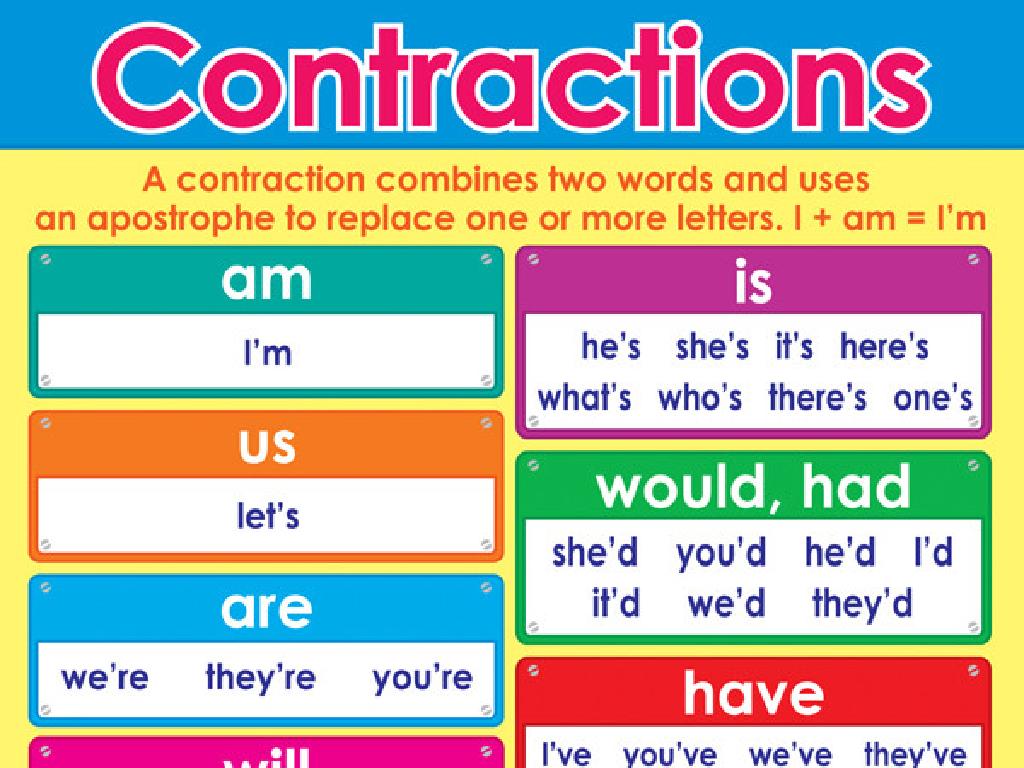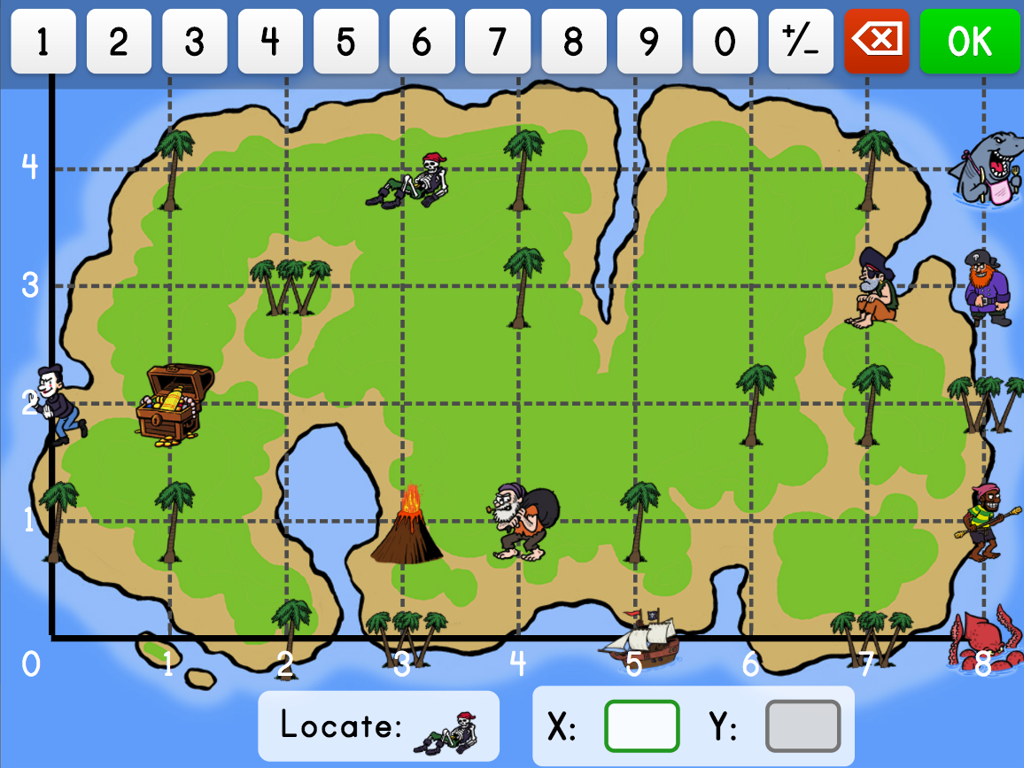Identify Expressions And Equations
Subject: Math
Grade: Sixth grade
Topic: One-Variable Equations
Please LOG IN to download the presentation. Access is available to registered users only.
View More Content
Welcome to Expressions and Equations!
– Algebra’s language basics
– Algebra uses symbols for numbers and operations.
– Expressions vs. Equations
– Expressions are math phrases, equations are statements.
– Expressions in problem-solving
– Use expressions to represent real-world situations.
– Equations unlock solutions
– Equations allow us to find unknown values.
|
This slide introduces students to the foundational concepts of algebra, focusing on expressions and equations. Begin by explaining that algebra is like a language with its own rules, where symbols represent numbers and operations. Clarify the difference between expressions (mathematical phrases that can represent quantities) and equations (math statements that show two expressions are equal). Highlight how expressions can model real-life scenarios, such as total cost or distance traveled. Then, discuss how equations are used to solve problems by finding unknown values. Encourage students to think of equations as puzzles to be solved, and expressions as the building blocks of those puzzles. Provide examples to illustrate each concept and ensure students understand the practical applications of what they’re learning.
Understanding Mathematical Expressions
– Define a math expression
– A combination of numbers, variables, and operators
– Examples of expressions
– 3x + 2, 7 – y, 4(a + 8)
– Identify expression parts
– Terms are the elements separated by + or –
– Terms, coefficients, variables
– Coefficients are numbers before variables
|
This slide introduces students to the concept of mathematical expressions. Start by defining an expression as a mix of numbers, variables, and operations without an equality sign. Provide clear examples of expressions, ensuring to include a variety of forms. Explain the parts of an expression: terms are the building blocks separated by plus or minus signs, coefficients are the numerical factors of the terms, and variables are symbols representing unknown values. Use visual aids or manipulatives to help students identify these parts in different expressions. Encourage students to practice by creating their own expressions and identifying the terms, coefficients, and variables within them.
Creating Expressions from Word Problems
– Translating words to expressions
– Convert word problems into mathematical expressions
– Key terms that indicate operations
– ‘Sum’ means +, ‘difference’ means -, ‘product’ means *, ‘quotient’ means /
– Practice with example scenarios
– ‘If 5 more than a number, x: x + 5’
– Write your own expressions
– Use scenarios to create expressions using variables
|
This slide introduces students to the concept of creating algebraic expressions from word problems, which is a fundamental skill in understanding algebra. Start by explaining how to translate common phrases into mathematical operations. For example, ‘sum’ translates to addition, while ‘product’ refers to multiplication. Provide practice scenarios such as ‘5 more than a number’ and guide students to express this as ‘x + 5’. Encourage students to identify key terms and write expressions for various scenarios. The goal is for students to become comfortable with converting words into mathematical language and to recognize that expressions can represent real-world situations.
Understanding Equations
– Define an equation
– An equation is a statement that two expressions are equal, involving numbers and variables.
– Equality and the equal sign
– The equal sign (=) shows balance between the left and right sides.
– Equation examples
– For instance, 3 + x = 7 or 2y – 4 = 10.
|
This slide introduces the concept of equations to the students. Begin with the definition, explaining that an equation is essentially a math sentence stating that two things are equal. Emphasize the importance of the equal sign, which indicates that the value on one side of the equation is the same as the value on the other side. Provide clear examples of simple one-variable equations and demonstrate how they represent a balance. Encourage students to think of the equal sign as a scale that must always be balanced, setting the stage for solving equations in subsequent lessons.
Equations in Real Life
– Equations as problem-solving tools
– Real-world application of equations
– Calculate distances, budgets, or scores using equations
– Formulate equations from situations
– Create an equation from a story or problem description
– Practice with real-life scenarios
– Example: If 5 apples cost $10, how much for 20 apples?
|
This slide aims to show students the practical use of equations in everyday life. Start by explaining that equations are not just abstract concepts but are used to solve real problems, such as figuring out distances, managing budgets, or keeping score in games. Provide guidance on how to translate a word problem into a mathematical equation, emphasizing the importance of identifying variables and constants. Encourage students to practice by formulating their own equations based on real-life situations they encounter. For example, if they want to buy multiple items with a known price, how can they calculate the total cost? This exercise will help them understand the relevance of math in their daily lives and improve their problem-solving skills.
Expressions vs. Equations
– Compare expressions and equations
– Expressions are like phrases, equations are like sentences with a ‘verb’ (=).
– Expression: no equal sign
– Example: 3x + 2 is an expression.
– Equation: has an equal sign
– Example: 3x + 2 = 6 is an equation.
– Practice identification
– Given examples, decide if they are expressions or equations.
|
This slide aims to clarify the difference between expressions and equations, which is a fundamental concept in algebra. Expressions are mathematical phrases that can represent a number but do not show equality. Equations, on the other hand, include an equal sign and show that two expressions are equal. To help students understand, compare expressions to incomplete sentences and equations to complete sentences with a verb, which in this case is the equal sign. Provide several examples and ask students to identify them as expressions or equations. Encourage students to explain their reasoning for each identification to reinforce their understanding.
Class Activity: Expression and Equation Hunt
– Find expressions and equations around you
– Work in pairs for the hunt
– Write down your findings
– Note where you found them and what they represent
– Share and discuss with the class
– Explain how you determined each example
|
This interactive class activity is designed to help students recognize expressions and equations in real-world contexts within their classroom or school environment. Students will work in pairs to foster collaboration, searching for and identifying as many expressions and equations as they can. They should write down each example, noting its location and what it represents. After the hunt, students will share their findings with the class, discussing how they identified each example and what they learned from the activity. As a teacher, prepare to guide the discussion, clarify any misconceptions, and highlight the practical applications of expressions and equations. Possible activity variations could include finding expressions and equations in textbooks, on posters, or in instructional materials.

